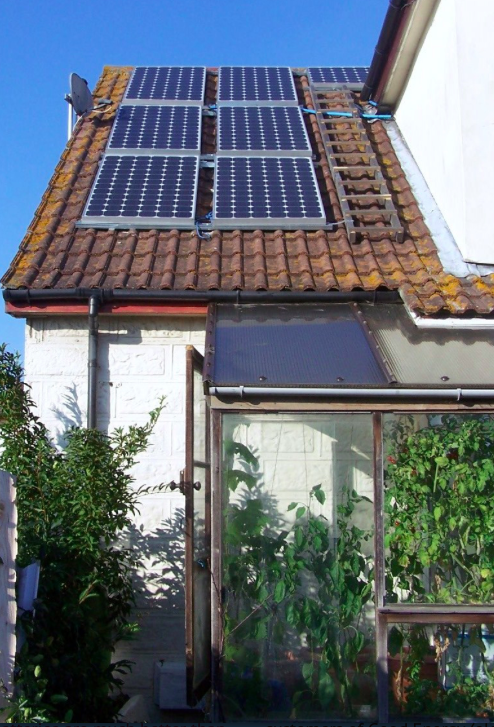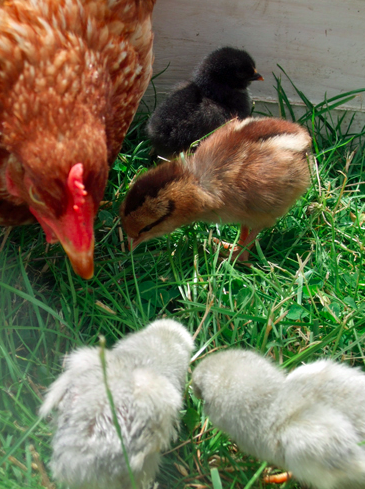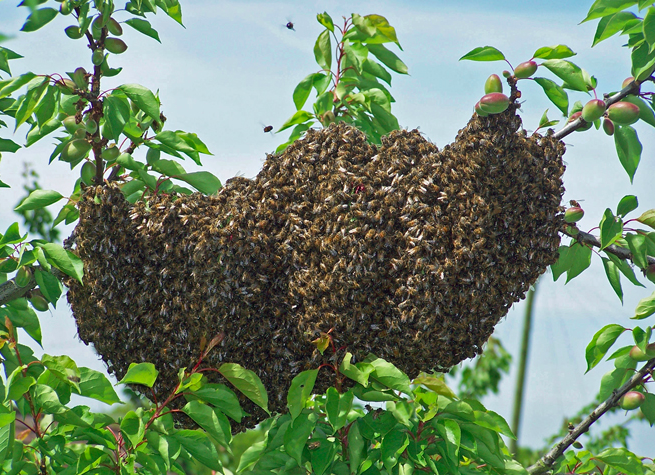by Chris Southall
 I spent nine years living a self-sufficient lifestyle, off-grid with my family in the Isle of Man in the 1970’s. Because of that I’ve always had these ideas in various degrees. When I met Rosie eleven years ago, we discovered Permaculture and realizing how much it chimes with our own ideas, integrated its techniques into our plans for EcoDIY.
I spent nine years living a self-sufficient lifestyle, off-grid with my family in the Isle of Man in the 1970’s. Because of that I’ve always had these ideas in various degrees. When I met Rosie eleven years ago, we discovered Permaculture and realizing how much it chimes with our own ideas, integrated its techniques into our plans for EcoDIY.
We are largely focused on self-reliance and we also place a high importance on integration with people and the community around us. We support the local FoodCycle group and benefit from their - and other neighbours’ - food waste for our compost.
We also have good relationships with some of the local farmers and regularly glean vegetables from their fields after harvest for our own use and for Foodcycle.
We give away any surplus we produce (apart from eggs and honey which we sell from the door) and people will give us anything they think we would find useful – most of these bits and pieces get passed on to other homes.

Certainly, our designs have evolved as we have experimented with growing some food in our woodland, and added new elements such as putting our own woodchip down in one of our chicken runs, this encourages worms and as the chippings mix with nitrogen-rich manure they break down more rapidly.
This system creates compost for the vegetable garden and provides nutrient and moisture retention for the almond trees and raspberries in the run.
We have learned many lessons along the way. For instance although we are in an area of right-wing politics there are still friendly like-minded people out there to connect with. On the practical front, we live in the driest (and warmest!) part of England and need to store a lot of water and use techniques like constant mulching to keep our garden growing.
We also have learnt we can grow exotic fruits like peaches, apricots, grapes in this sunny corner of the UK. Understandably, the number and amount of pollinators in the garden has increased massively in response to the diverse flowers on offer.
As the garden matures, we have learnt to dry, bottle, jam and freeze to make best use of our produce.
We have also been adding and tweaking new things. We are continually observing how systems are working, what is happening in the garden, with our energy production and water storage. We are analysing what resources are available, in time, physical items such as grass clippings, waste wood, polycarbonate sheeting or even metal buckets.
We are keen to extend the season, so monitoring the temperature in the greenhouse attached to the house becomes important. When there was a continually cold spring a couple of years ago and night time temperatures dropped too low for the tomatoes to be comfortable, we needed an additional source of heat. The solar gain, solar panels and thermal mass under the flow were not sufficient when it was so dull. Using a modified SADIM process led me to add a rocket stove.
 This entailed a lot of research as well as scavenging the resources we didn’t already have such as an oxygen cylinder, and more bricks to direct the flue along the floor and provide additional thermal mass. Final testing revealed that, because the flue is horizontal for the length of the greenhouse, it needed a taller chimney than predicted to create sufficient draught.
This entailed a lot of research as well as scavenging the resources we didn’t already have such as an oxygen cylinder, and more bricks to direct the flue along the floor and provide additional thermal mass. Final testing revealed that, because the flue is horizontal for the length of the greenhouse, it needed a taller chimney than predicted to create sufficient draught.
A very small quantity of wood - often from skips - is needed to run the stove for an hour or two, which keeps the greenhouse above 10°C for many hours overnight, catching and storing the energy which adds to our yield. I have since made a smaller, portable rocket stove for outdoor cooking as they are such an efficient way of capturing a small amount of energy.
We have also adapted to modern needs. We put effort into our website as a way of spreading the Permaculture word and have built our own DIY battery solar electricity system. We also are constantly adapting our gardening to climate change as it unfolds! Since Rosie stopped a permanent job, we have multiple small income streams, including occasional B&B, FIT payments from the solar panels, and part-time work arising from volunteering, this has given Rosie more time to work on the smallholding.
For those who are looking to start their own permaculture design, don’t be afraid to ask other people for things they may not be using, or they see as waste – you’re often doing them a favour. Look for other like-minded people in your area to link up with – network, network, network. Go and wwoof on other projects and learn by hands-on experience. Start small and grow your project ‘organically’, without being afraid to experiment and change if your observations show anything that is not working.
Find out more about the Eco DIY house.